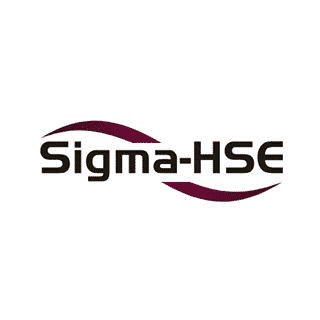How To Verify Your Facility Qualifies To Follow Process Safety Management (PSM) Regulations
As of 2024, the total number of workplace fires/explosions in the United States is estimated to be around 3,340 incidents annually. Workplace fires and explosions are responsible for about 100 deaths and 1,100 injuries each year, with an approximate economic impact of $2.4 billion. Given these statistics, adhering to Process Safety Management (PSM) regulations is crucial for ensuring safety in facilities handling hazardous chemicals.
Process Safety Management (PSM) regulations are essential for ensuring safety in facilities that handle hazardous chemicals. If your operations involve chemicals listed in OSHA’s Appendix A and exceed the specified Threshold Planning Quantities (TPQs), your facility must comply with PSM standards. Understanding OSHA guidance on determining whether a facility falls under the Process Safety Management (PSM) regulation is critical to preventing accidents and maintaining safety.

This blog post, the first of a two-part series, will guide you through understanding and verifying PSM applicability. Here’s what you’ll discover in this article:
Determining Process Safety Management (PSM) Applicability
Determining the applicability of Process Safety Management (PSM) within your organization is a foundational step toward establishing a safe and compliant operational environment. It involves thoroughly evaluating various factors, such as the types and quantities of hazardous chemicals in use, the nature of processing activities, and regulatory requirements. Understanding whether and how PSM standards apply is crucial for developing tailored safety protocols that meet legal obligations and protect both personnel and assets.
Establish and Maintain Chemical Inventory
Start by compiling a comprehensive list of all chemicals at your facility and their quantities. Compare this list with the TPQ from OSHA Appendix A of the PSM Standard. Some examples from that listed are noted below:
- Chlorine: 1,500 lbs.
- Fluorine: 1,000 lbs.
- Hydrogen Chloride: 5,000 lbs.
- Methylene Chloride: 15,000 lbs.
- Nitric Oxide: 250 lbs.
- Sarin: 100 lbs.
If the quantity of any hazardous chemicals meets or exceeds these amounts, your facility falls under PSM regulations. PSM also applies to facilities processing flammable liquids and gases in quantities of 10,000 pounds or more.
Industries Typically Affected
Common industries subject to PSM include:
- Chemical Manufacturing
- Refrigeration systems using ammonia
- Water and Wastewater Treatment Facilities
- Paints, Coatings, Adhesives
- Pulp & Paper
- Pyrotechnics
- Semiconductor Manufacturing
Even if your facility doesn’t fall under PSM requirements, applying the framework of a Risk Management Plan (RMP) can still enhance safety and improve processes.
Threshold Quantities and Special Exemptions
Threshold Quantities refer to the specific amounts of toxic, reactive, flammable, or explosive chemicals that, when exceeded, trigger PSM requirements under regulations such as OSHA’s PSM Standard or the EPA’s Risk Management Plan (RMP). Understanding these thresholds is essential for identifying which processes and chemicals fall under PSM jurisdiction.
- Threshold Quantities: Specific amounts of chemicals that trigger PSM requirements include:
- Extremely Hazardous Substances (EHSs): 500 pounds or the TPQ, whichever is lower.
- Most other hazardous chemicals: 10,000 pounds.
- Gasoline: 75,000 gallons.
- Diesel fuel: 100,000 gallons (for retail gas stations).
- Maximum Allowable Quantities (MAQs): The California Fire Code and California Building Code set MAQs per control area for hazardous materials.
- OSHA Regulations: OSHA requires facilities to maintain Safety Data Sheets (SDSs) for hazardous chemicals, regardless of quantity.
Special Exemptions
Equally important are Special Exemptions, which account for unique scenarios where certain processes or chemical uses might be exempt from standard PSM regulations based on their potential risk levels or specific regulatory provisions.
- Retail facilities primarily selling chemicals
- Processing hydrocarbon fuels for heating and refueling
- Oil and gas drilling operations
- Normally unoccupied remote facilities
Be aware of local variations to codes, which may be stricter. For instance, California has its own Maximum Allowable Quantities.
A comprehensive understanding of Process Safety Management (PSM) regulations and their applicability is crucial for ensuring workplace safety and regulatory compliance. Threshold Quantities and Special Exemptions are vital components in this framework, functioning as critical determinants for which processes fall under regulatory scrutiny and which may be exempt due to specific criteria.
Mastering these concepts not only facilitates the identification and management of risks associated with hazardous chemicals but also helps organizations navigate the complex regulatory environment with confidence. By diligently adhering to PSM requirements and recognizing applicable exemptions, companies can foster a culture of safety, protect their workforce and the surrounding community, and avoid regulatory penalties.
In the next blog post, we will dive into the key components of a Process Safety Management program, strategies for hazard analysis, and methods for emergency preparedness and continuous improvement. Stay tuned to ensure your facility is equipped to handle safety challenges effectively.










